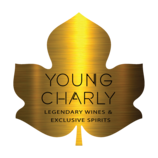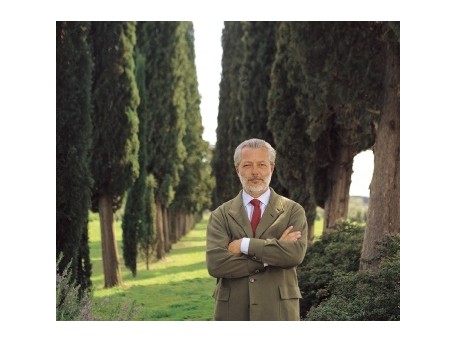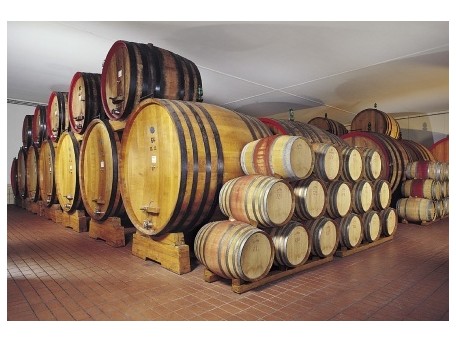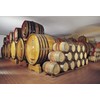Col d'Orcia
Col d'Orcia, organic island in Montalcino
At Col d'Orcia, for many years we have valued the natural environment in which we operate. Therefore, in 2010 we decided to go through the process of organic certification in order to become the largest organic wine producing farm in all of Tuscany. Since August 27, 2010, the entire estate, including vineyards, olive groves, other fields and even the gardens, has been managed exclusively according to organic farming methods.
Col d'Orcia literally means the hill overlooking the Orcia River. The Orcia River forms the southwestern boundary of the Brunello di Montalcino area, and the farm's name is intrinsically linked to the physical location where the vineyards are planted. Col d'Orcia's mission is to produce the best possible wines that the exceptional combination of soil and climate in this part of Montalcino can produce.
The estate is located on the southern slope of the Montalcino area and is an integral part of the Orcia Valley, the Val d'Orcia. The Val d'Orcia is a unique area that was declared a World Heritage Site in 2004. UNESCO explains why as follows, "The Val d'Orcia is an exceptional reflection of the way the landscape was rewritten in pre-Renaissance times to reflect the ideals of good governance and to create an aesthetically pleasing picture that was celebrated by painters of the Sienese school. The Val d'Orcia is considered an icon of landscape that has had a profound influence on the development of landscape thinking."
On the hill overlooking the Orcia River, where the vineyards were planted, you can still see today some very old olive trees planted in rows. They have survived more than 4 centuries and testify to the uniqueness of the microclimate on the Col d'Orcia hillside. As early as 400 years ago, this part of Montalcino was an agricultural area thanks to the particularly favorable soil and climate conditions.
"Perhaps one of Franceso Marone Cinzano's most significant contributions to Montalcino was choosing the right areas to plant Sangiovese" - Decanter
Unique location as lifeblood of the estate
The vineyards are located on the southern slope of the Montalcino area, on hilly terrain and extend over 540 hectares, from the Orcia River to the village of Sant'Angelo in Colle, at about 450 meters above sea level. Its location is particularly favorable because it faces directly south and is protected by the barrier of Monte Amiata (1,750 meters) from meteorological events such as floods or hail, and by the mild climate coming from the Tyrrhenian coast to the west, from which the sea is about 35 km away. The nature of the soil is undoubtedly favorable for viticulture, with mainly loose soil, poor in clay and rich in limestone and inert material. The area is not affected by fog, ice or late frosts, while frequent breezes guarantee the best conditions for vine health. The climate is typically Mediterranean, with limited rainfall falling mainly in the months of March, April, November and December. The high number of sunny days throughout the growing season ensures gradual and complete ripening of the grapes. South-facing vineyards and the particular nature of the soil give structure and elegance to the Brunello produced on this side of Montalcino.
From fermentation to bottle
Fermentation is carried out in temperature-controlled stainless steel tanks that are shaped so that the surface of the contact between juice and peel ensures optimal delicate extraction of high-quality ingredients such as polyphenols and dyes. Maturation in wood takes place in Slavonian and selected French oaks. Barrel size and aging time vary depending on the characteristics of each batch. For some wines, aging in wood can take up to 4 years. Finally, the bottles are kept on the estate for further aging until their refinement is complete. Therefore, we can truly say that every bottle of our wine is handmade.
The winemaking cellar, made from the original farm buildings, has controlled-temperature steel tanks and a capacity of 8,400 hectoliters. The aging cellar, built in 1990 and perfectly integrated into the surrounding Mediterranean environment, has Slavonian and Allier oak barrels with a capacity of 25, 50, 75, 150 hectoliters for a total of 7,000 hectoliters and 800 barriques for a total of 1,800 hectoliters.
'Large casks are fundamental to producing long-lived Brunellos, as barriques accelerate the ageing process' - Francesco Marone Cinzano
Exceptional Brunello's
Of course there is the Brunello di Montalcino, but also the rare Riserva, two wines of great class with a long shelf life. For slightly earlier consumption, there is the Rosso di Montalcino and Banditella as a "single vineyard" cru.. Special wines in the range include Nearco and especially Olmaia which, with its international character, thanks to its 100% Cabernet, approximates the Super Tuscans'. The Sant'Antimo Pinot Grigio conquers the heart of every lover of top Italian white wines.
Poggio al Vento: a great name for a very large bottle. 'Poggio al Vento' refers to a plot on a hill that, perhaps, is exposed to the wind, but in any case faces south. We are located at an altitude 350m in the municipality of Sant'Angelo in Colle in the south of the Montalcino area. Like the other Brunello of Col d'Orcia, this Poggio al Vento is prepared in the traditional way, without too much extraction, and stored for a considerable time, as required by Riserva law, for 4 years in large wooden casks. Before leaving the estate, this wine matures for 2 more years in bottle, talk about patience and vision for quality!!! Anyway, we are dealing here with the textbook example of Brunello: deep dark red color with shades of garnet red, delicate aromas of dried red fruits complemented by some smoky notes. Elegant and fresh finish with long finish, without any dominance of alcohol, with again hints of dried fruit and tobacco
"A well-bred Italian wine with evident and natural class."
MAIN DISTRIBUTOR FOR BELGIUM!







